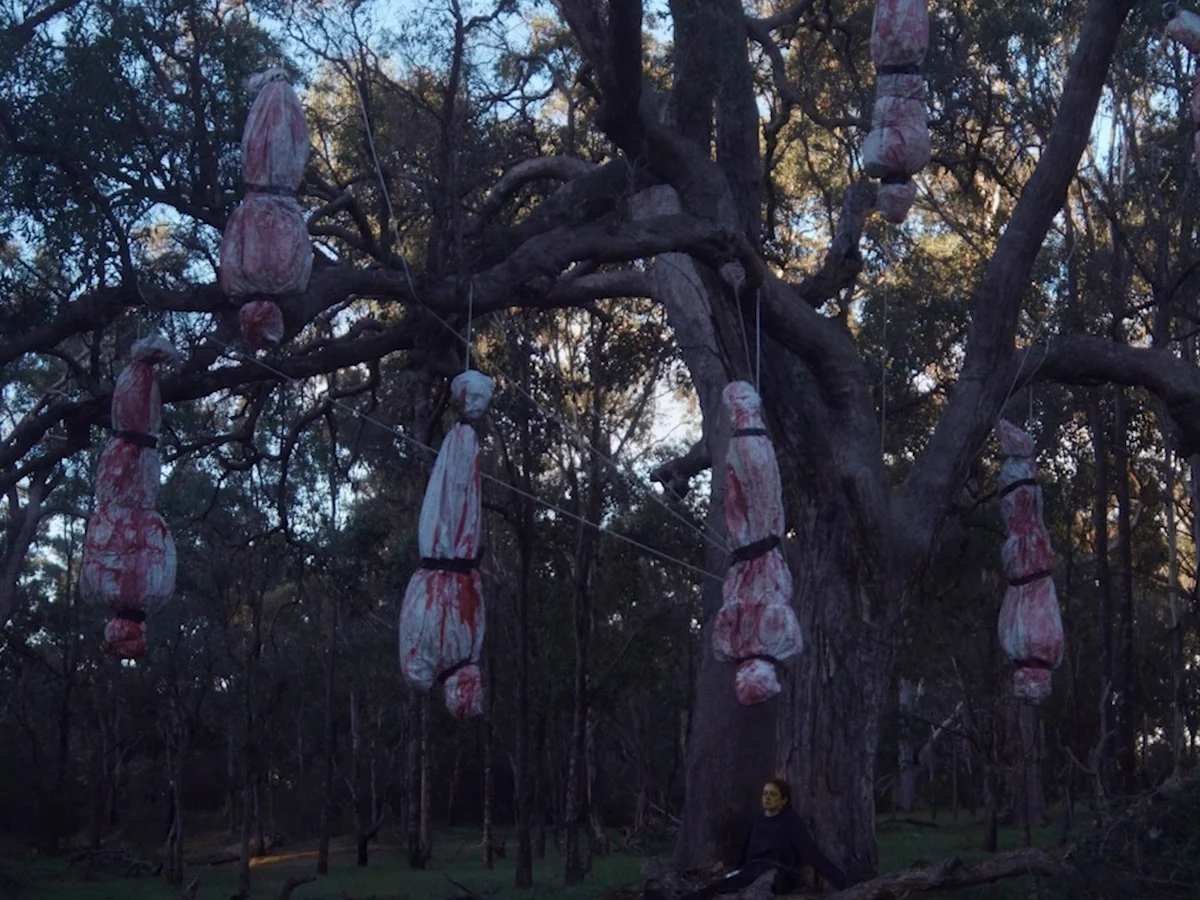
when Horror Yearbook – The Banished unleashes a spine-chilling tale soaked in dread and dust, capturing the eerie vastness of the Australian outback with an unrelenting grip. From the moment Grace steps off the bus in her desolate hometown, the film begins to spiral into unsettling territory. Her brother’s disappearance haunts every glance, and rumors of a mysterious cult begin to surface like weeds in cracked earth.
The director creates tension through fragmented storytelling, cutting between Grace’s present desperation and glimpses of something darker lurking just beyond the hills. Viewers are plunged into this mental unraveling, not through jump scares but through a creeping sense of predestination. The dusty bush, the looming silence, and a parade of ominous locals build a grim tone that suggests nothing here is random. With each passing scene, the unsettling mood tightens its grip, dragging both Grace and the viewer deeper into a nightmare of madness, memory, and ritual.
The Banished unleashes its horrors by embracing every recognizable folk-horror hallmark yet managing to add layers of visual flair and psychological tension. Yes, there are masks, twisted rituals, and warnings that go ignored. But instead of leaning solely on cliché, the film toys with narrative loops and quick-cut editing that keep things jagged and unpredictable.
Grace’s journey into the bush alongside her shady former teacher Mr Green is more than just a physical trip; it mirrors a descent into her own fractured past. Her uncle’s warnings echo in the background, serving as reminders of a family history soaked in secrets and suffering. While the eerie commune lurks like a shadow at the edge of the film, the true horror lies in Grace’s isolation and the unknown rituals seemingly embedded in her bloodline. Every step toward the commune feels cursed, and the dread comes not from what is seen, but from what might be remembered.
“Read about: Ancient Sea Monster Linked to Prophet Noah Discovered? Experts Are Baffled!”
In terms of atmosphere, The Banished stands out as a rare horror film that embraces the Australian landscape not as a backdrop but as a character itself. The dry terrain becomes a canvas for both psychological and physical decay. Through rapid edits and close-ups of Grace’s body and surroundings, the film draws out a duality between what festers outside and what deteriorates within. Grace’s mental state deteriorates as visions blend with reality and memories bleed into the present. The camera prowls like a predator, panning across broken terrain and weathered faces, each hinting at long-buried truths. The use of abbreviated comic-book-style sequences breaks the pacing just enough to keep the audience guessing. It does not rely on traditional horror tricks. Instead, it crafts an ambiance of rot and ritual, enhanced by eerie sound design and a muted color palette that mimics the dust-choked Australian horizon.
The story takes a jarring turn when Grace, despite warnings, finds herself embraced by the very nightmare she tried to understand. Her reunion with the so-called family deep in the outback is less a resolution and more a terrifying transformation. The storytelling shifts into phantasmagoria, layering distorted rituals with symbolic flashbacks and disturbing communal unity. However, as the visuals grow more intense, the narrative coherence begins to falter. The psychedelic descent into cult life offers mesmerizing moments, but the lack of clear stakes weakens the emotional core. Still, this portion of the film serves as an ambitious experiment in visual horror, challenging viewers to feel disoriented along with its protagonist. There is power in that chaos, even if meaning becomes obscured. The fear becomes internal, a swirling storm of family, faith, and fate crashing through Grace’s psyche like a fever dream.
Though it stumbles in its third act, The Banished remains a commendable addition to the growing canon of folk horror. It captures the mystique of rural horror while embracing a distinctively Australian voice. The decision to avoid cheap thrills in favor of tension and layered visuals places it closer to slow-burn masterpieces rather than conventional slashers.
Folk horror fans will recognize the DNA of films like Midsommar and The Wicker Man, but here the dust is thicker, the voices quieter, and the tragedy more personal. The final scenes offer little in terms of clarity, but plenty in atmosphere and symbolism. The Banished dares to suggest that horror may come not from monsters, but from our pasts, our families, and the land itself. It is not a comfortable watch, nor is it meant to be. Instead, it unsettles with intention, rooting its terrors in memory, isolation, and a history too deep to escape.